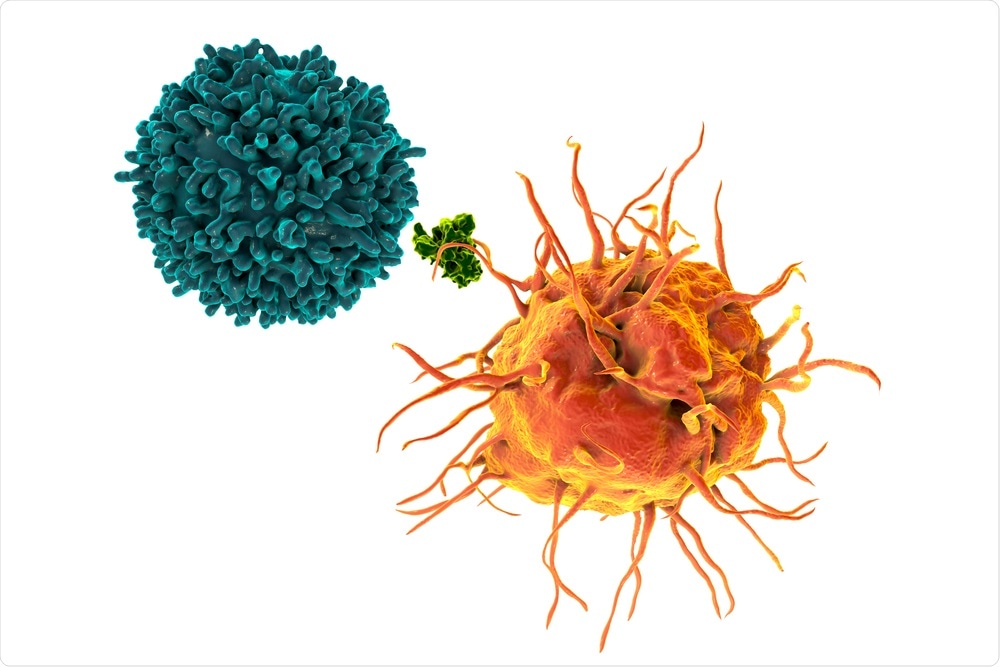Recent research published in eLife suggested that grouping of pathogen-recognizing proteins on immune T cells might be vital in pinpointing if an individual had an infection in the past.

Image Credit: Kateryna Kon/Shutterstock.com
Researchers often use tests evaluating antibodies against a pathogen to find signs of an earlier infection. However, this method could not precisely measure the strength and targets of an individual’s T-cell response to infection or vaccination.
The results of the recent study hints at a potential new approach. The patient information might be useful in the future for identifying infections, guiding treatments, or supporting the study and development of novel vaccines and therapies.
Immune T cells help the body detect and kill harmful bacteria and viruses. Proteins on the outer surface of T cells—known as receptors—enable the T cells to identify and eliminate human cells infected by specific pathogens.
While the abundance of specific receptors could provide clues about past infection, the enormous molecular diversity of T-cell receptors makes it incredibly challenging to assess which receptors recognize which pathogens. Not only is each pathogen recognized by a distinct set of receptors, but each individual develops a personalized set of receptors for each pathogen.”
Koshlan Mayer-Blackwell, Study First Author and Senior Data Scientist, Fred Hutchinson Cancer Research Center
Mayer-Blackwell adds, “We developed a new computational approach that allows us to find similarities among pathogen-specific T-cell receptors across individuals. Ultimately, we hope this will help develop signatures of past infection despite the enormous diversity of T-cell receptors.”
The researchers analyzed their approach by utilizing data from the immuneRACE study of T-cell receptors in patients with COVID-19. They utilized the new software for quick comparisons of large sets of receptors and produced 1,831 T-cell receptor groupings on the basis of the similarities in the receptors’ amino acid sequences that indicates that they have similar functions.
In an independent group of COVID-19 patients, the researchers discovered that the common molecular patterns linked with receptor groupings were more strongly identified than individual receptor sequences that were earlier hypothesized to detect parts of the SARS-CoV-2 virus, revealing a key improvement on the present approaches.
Our study introduces and validates a flexible approach to identify sets of similar T-cell receptors, which we hope will be broadly useful for scientists studying T-cell immunity. Grouping receptors together in this way makes it possible to compare responses to infection or vaccination across a diverse population.”
Koshlan Mayer-Blackwell, Study First Author and Senior Data Scientist, Fred Hutchinson Cancer Research Center
The researchers developed a free customizable software named tcrdist3 to help other scientists utilize this approach to create T-cell biomarkers with their data.
Our software provides flexible tools that will enable scientists to analyze and integrate the rapidly growing libraries of T-cell receptor sequencing data that are needed to identify the features of pathogen-specific T-cell receptors.”
Andrew Fiore-Gartland, Study Senior Author and Co-Director, Vaccines and Immunology Statistical Center, Fred Hutchinson Cancer Research Center
“We hope it will open new opportunities not only to identify patients’ immunological memories of past infections and vaccinations but also to predict their future immune responses,” remarks Fiore-Gartland.
Source:
Journal reference:
Mayer-Blackwell, K., et al. (2021) TCR meta-clonotypes for biomarker discovery with tcrdist3 enabled identification of public, HLA-restricted clusters of SARS-CoV-2 TCRs. eLife. doi.org/10.7554/eLife.68605.